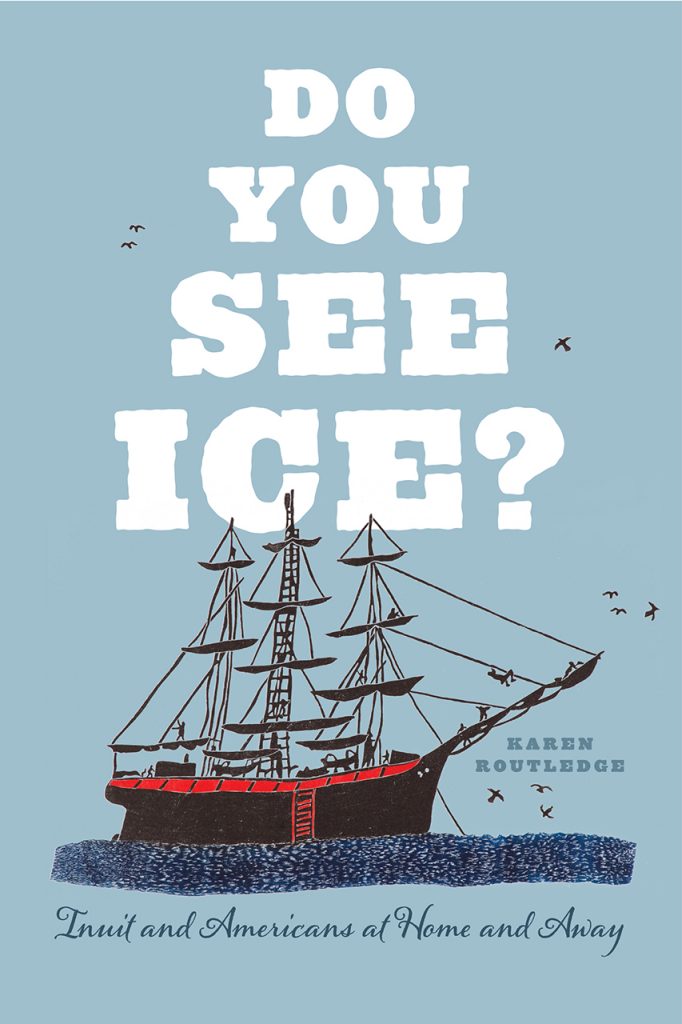5 Questions for Karen Routledge, author of “Do You See Ice?: Inuit and Americans at Home and Away”
Many Americans imagine the Arctic as harsh, freezing, and nearly uninhabitable. But as Karen Routledge shows in Do You See Ice?, the living Arctic—the one experienced by native Inuit and others who work and travel there—is a diverse region shaped by much more than stereotype and mythology.

We sent Routledge some questions recently to delve into exactly how she came to study this unusual topic.
How did you end up working as a professional historian, and what do you love about it?
I’m a historian for Parks Canada, the Canadian national park service. I was lucky to end up here. When I was a graduate student, I thought I wanted a tenure-track job, and feared I’d be a failure if I didn’t get one. Near the end of my PhD, a Parks Canada historian (my now-colleague Meg Stanley) told me they were hiring. I realized I badly wanted the job. Thankfully I got it, and I’ve been here since 2010.
This has ended up being an ideal job for me. I love that Parks Canada projects can reach a wide audience, and that so many local people and visitors are passionate about our sites. I work mostly on project teams with other staff and community partners, and it’s amazing to watch different kinds of knowledge come together into a final product. Finally, I’ve long been fascinated by place: by how we shape and are shaped by our surroundings. Place can often get abstracted in academic histories, but people learn about parks and historic sites by being there. Place is always at the centre.
What drew you to write a book about the kinds of cross-cultural encounters detailed in Do You See Ice?
I moved around quite a lot when I was younger. My experiences starting over, standing out, not understanding, realizing how much I will never know…these all fuelled my interests in learning about different kinds of cross-cultural encounters in the past. Moving also made me think more about the idea of home, and how complicated and important it is. What makes a place home? Why do we see some places as hospitable and welcoming, and others as not? What factors influence our experience of a place? When I started spending time around Pangnirtung, in the part of the Arctic where most of my book takes place, I saw Inuit at home and relating to the land and animals. It was such a contrast to many bleak historical depictions of the same area. I wanted to try to understand the experiences of these early visitors, and to examine whether the temperate United States could be an equally strange, inhospitable, and dangerous environment — for example for Inuit who came south on whaling ships and overwintered there.
Are there any universal threads that you see in the stories of these encounters?
Yes. One is the idea of home: the people I write about who were away and suffering were often dreaming of home, trying to re-create home, trying to get home. Sometimes this was an effective survival tactic, but other times it blinded them to ways of living in the new place. A second universal thread is how much is left outside of cross-cultural encounters. People share an experience, but what they take away from it can be so divergent. Many cross-cultural encounters have had profound effects, but what is actually being communicated is often superficial compared to what is going on in the participants’ minds and wider worlds.
Where do you anticipate your research taking you next?
I’m not sure if this question was meant literally, but because I work for Parks Canada, my work takes me to some amazing places. I’ve spent the past two months in Whitehorse, mostly working on a new exhibit about the history of riverboats in Yukon for S.S Klondike National Historic Site. I am hoping to return to Pangnirtung this fall for another Parks Canada project — I always want to go back there. I’m not sure if I will embark an another academic book project; for now, I’m really happy with the work I get to do for Parks Canada.
What is the best book you’ve read recently?
Eden Robinson’s novel Trickster Drift, the second book in a trilogy about a teenager haunted by magic. Jared, the protagonist, is an Indigenous kid who moves to the big city (Vancouver) and struggles with school and relationships and sobriety. He also hangs out with wolves and otters with human skin and shares an apartment with a ghost called “Dent, Arthur Dent.” I just heard an interview with Robinson where she described Trickster Drift as “a pretty bonkers novel.” That’s true, and it’s awesome. It’s the sequel to Son of a Trickster, which I recommend starting with.
This year I decided I was going to stop reading so much depressing news on my phone and start reading more novels. It’s been great.